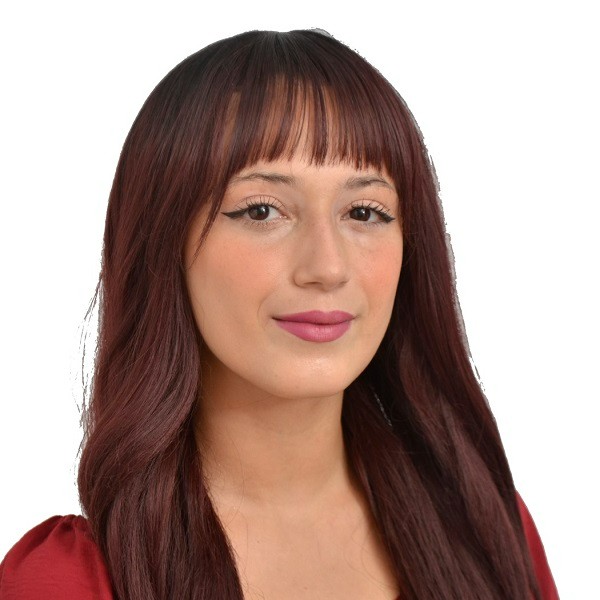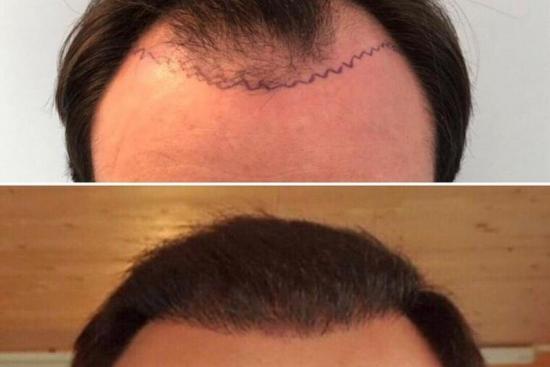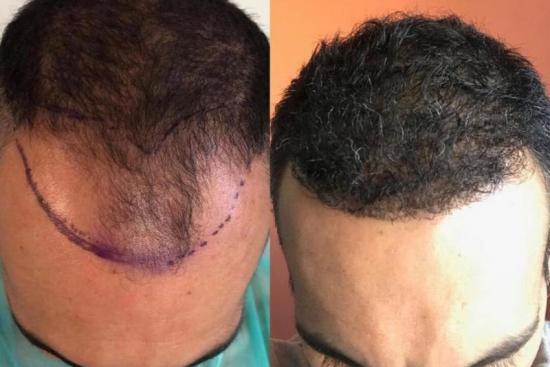Hair transplantation, the gold standard in hair restoration surgery, is the only definitive solution for advanced alopecia. The technique involves the careful extraction of follicular units from a hairy area for transplantation into bald areas.
- Patients with baldness.
- Men and women with a bald forehead.
- People with alopecia and hair loss.
- People who have suffered a head injury and have lost hair.
- Pains.
- Bleeding.
- Infection (low risk).
- Swelling or redness of the scalp and/or forehead.
- From 4 to 6 hours, with a break of 20 min every 2 hours, depending on the number of grafts.
- Professional unavailability of 2 to 5 days.
- Back to sports activities after 1 month.
- The final result is visible after 6 to 12 months.
- 98%.
Cost of hair transplant package in Turkey
The cost of hair transplant package in Turkey varies depending on the technique used and the number of grafts required:
- FUE (Follicular Unit Extraction): From $1,500 to $4,000.
- FUT (follicular unit transplantation): From $2,500 to $6,000.
- Micrografts: From $3,500 to $7,000.
- Robotic hair transplant: From $4,000 to $8,000.
Get a free, no obligation quote to find out the exact cost of your hair transplant!
Best Clinics with Verified Reviews

- Multispecialized hospital
- 7 operating rooms
- Capacity é of 170 beds

- Multispecialized hospital
- Hospital founded in 2007
- Very good reputation in ENT department
Hair transplant in Turkey
Bring your hair back to life with hair transplantation, an advanced surgical technique that restores natural hair density. This technique involves gently removing healthy hair follicles from an abundant area of the scalp (donor area) and implanting them into thinning or hairless areas (recipient area).
Our experts in Turkey have mastered the most advanced hair transplant techniques to treat effectively:
- Androgenic alopecia: the most common form of baldness, often of genetic origin, affecting both men and women.
- Alopecia areata: An autoimmune disease that causes patchy hair loss.
- Scars: Hair transplants are used to camouflage areas that have been left hairless due to injury or surgery.
Hair transplantation techniques in Turkey
There are several traditional and innovative techniques used to perform hair transplantation in Turkey:
Traditional techniques
The traditional hair transplant techniques are FUT and FUE:
- The Follicular Unit Transplantation (FUT) technique: This is one of the oldest traditional techniques. It involves the extraction of a strip of scalp with hair follicles from the donor area, typically the back of the head. The extracted follicles are then transplanted to areas of hair loss. This procedure results in a linear scar on the back of the head.
- The Follicular Unit Extraction (FUE) technique: This method involves the extraction of hair follicles individually from the donor area using either a punch tool or an automated extraction device. These follicles are then transplanted one by one to the recipient area.
Innovative techniques
Innovative hair transplant techniques in Turkey include:
- IFA hair transplantation (ARTAS Robot): ARTAS is a robotic system that uses 3D imaging technology to locate and extract hair follicles from the donor area. The follicles are then manually transplanted to bald areas. This technique allows for precise extraction of follicles and minimizes damage to surrounding hair.
- Robotic hair transplantation (Automated FUE): A new technique that uses a robot to perform hair follicle extraction and implantation. This technique is still under development, but has the potential to reduce the risk of human error and improve the precision of the procedure.
- DHI (Direct Hair Implantation) technique: This technique uses a special pen called the Choi Implanter Pen to extract and implant hair follicles directly into bald areas without the need for prior incisions. This allows for a faster, less invasive procedure.
Consultation with a qualified hair restoration specialist is essential to determine the best technique for your individual needs.
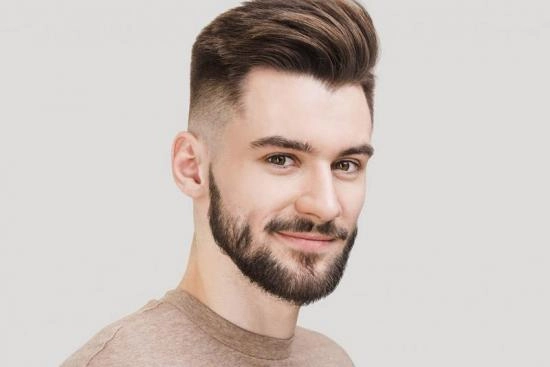
Pre-operative consultation: the key step before hair transplant
Before considering hair transplantation in Turkey, a thorough pre-operative consultation with a qualified surgeon is essential. This consultation is a critical step in the process. It allows the surgeon to fully assess your suitability for the procedure. He or she will perform a thorough clinical examination of your scalp to determine the exact nature of your alopecia and assess the extent of the areas to be treated.
A full medical check-up, including blood tests, will also be performed to ensure that you are a perfect candidate for the surgical procedure and to rule out any possible contraindications.
During this consultation in Turkey, you will have the opportunity to:
- Discuss your expectations in detail: The surgeon will take the time to understand your aesthetic goals and explain the different hair transplant techniques available.
- Ask any questions you may have: Don't hesitate to express any doubts or concerns you may have. The surgeon will be happy to answer them clearly and transparently.
- Create a personalized treatment plan: Based on your diagnosis and wishes, the surgeon will create a customized surgical protocol. This plan will specify the most appropriate graft harvesting technique for your case and the number of grafts needed to achieve a natural, harmonious result.
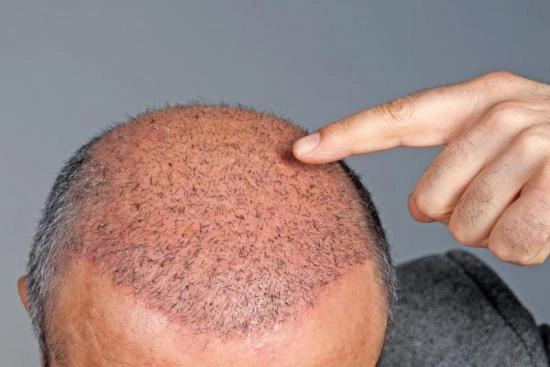
Post-hair transplant recovery and care
The recovery period following a hair transplant is critical to the success of the procedure. The scalp that has undergone surgery requires attentive care to promote optimal healing and harmonious regrowth of the grafts.
In accordance with post-operative medical recommendations, it is imperative to:
- Maintain the integrity of the grafted area: any trauma, whether mechanical (rubbing, pressure) or chemical (irritating products),may compromise graft acceptance. Therefore, the treated area should be handled with care.
- Appropriate hair hygiene: Hair should be cleaned gently, using products specifically designed for sensitive scalps. The choice of shampoo and frequency of shampooing should be determined in consultation with the surgeon.
- Provide an optimal environment for healing: Strict adherence to post-operative instructions, especially regarding rest and physical activity, is essential to optimize the healing process.
It should be emphasized that hair regrowth is a gradual, individual process. The first results are usually visible after three to four months. However, full hair growth can take up to a year, so patience is essential.
The success of a hair transplant depends in large part on the strict adherence to post-operative recommendations. By following these recommendations, patients maximize their chances of achieving a satisfactory and long-lasting aesthetic result.
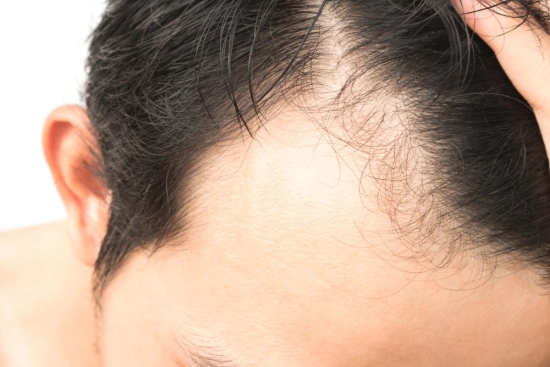
Risks of hair transplantation
Risks of hair transplantation
Any surgical procedure, including hair transplantation, carries a certain amount of risk. Although complications are rare, it's important to have a thorough understanding of them before proceeding.
There are certain risks associated with hair transplantation that you should be aware of. These include, but are not limited to:
- Infection: Although modern aseptic protocols greatly reduce this risk, it remains a possibility.
- Bleeding: Mild bleeding is common, but more severe bleeding may require medical intervention.
- Scarring: Modern surgical techniques are designed to minimize the visibility of scars, but in some cases scars may remain.
- Temporary loss of sensation: Numbness or tingling in the scalp may occur, but is usually temporary.
- Allergic reactions: Allergic reactions to local anesthetics or other substances used during the procedure are possible, although rare.
To minimize these risks, you should choose a surgeon who is qualified and experienced in hair transplantation. Turquie Santé places at your disposal its network of specialists renowned for their expertise in hair transplantation.
Our personalized care guarantees you the best possible experience, from preoperative consultation to postoperative follow-up.
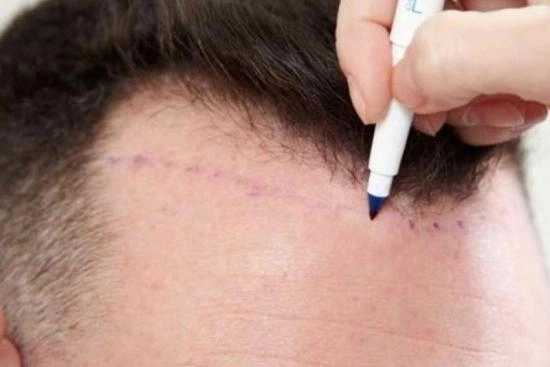
Hair implants with Turquie Santé
Are you looking for an effective and long-lasting solution to restore your hair? Turquie Santé opens the doors to the best Turkish clinics specializing in hair transplants. Our privileged partnerships with renowned facilities in Turkey guarantee you long-lasting, aesthetic results.
Benefit from customized support including airport transfers, personalized care, multilingual interpretation and rigorous post-operative follow-up. Our all-inclusive packages, starting at 1,600 Euros, offer you a turnkey solution for a successful hair transformation.
Our commitment = your satisfaction. In case of unforeseen circumstances, the Turquie Santé team is at your disposal to intervene quickly and guarantee you the best possible experience.
Share this page
Among our doctors for your Hair transplant
Hair transplantation is totally painless. Patients do not feel any pain at all because hair removal is performed under local anesthesia, which has a long-lasting analgesic effect. As a result, the operated area remains numb for several hours after the operation.
A hair transplant is considered successful when hair regrowth is uniform. If there are areas of insufficient hair density that expose the scalp, this usually indicates a failed hair transplant.
In general, transplanted hair is permanent. Transplanted grafts are healthy hair that grows and behaves like natural hair. However, in rare cases, they may fall out due to infection, injury, or other medical problems. If this happens, contact your surgeon immediately.
It is often advisable to consider hair transplantation after the age of 30, when the hair situation has become clearer and when hair loss has stabilized.
Preserving the scalp before the hair transplant is very important for good results after the procedure. To achieve this, a diet rich in:
- Zinc
- Omega-3
- Biotin
is recommended. You should also use shampoos and creams rich in biotin, which promote hair growth.

